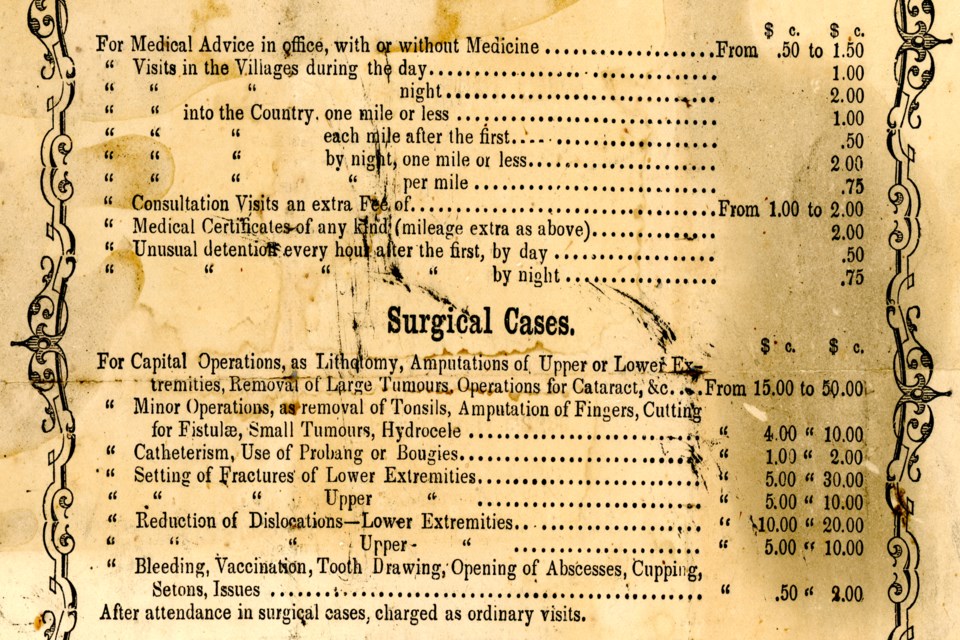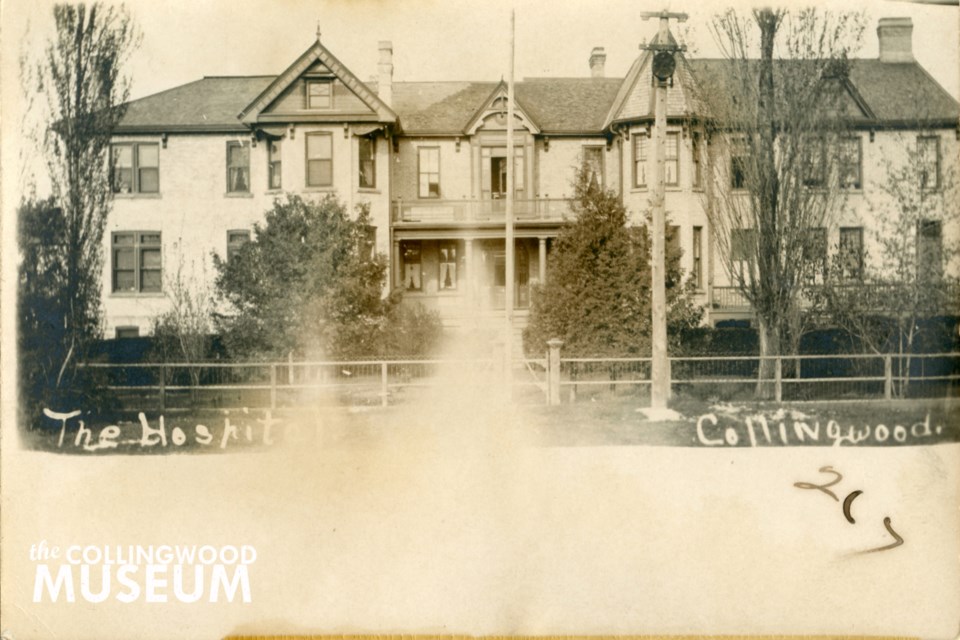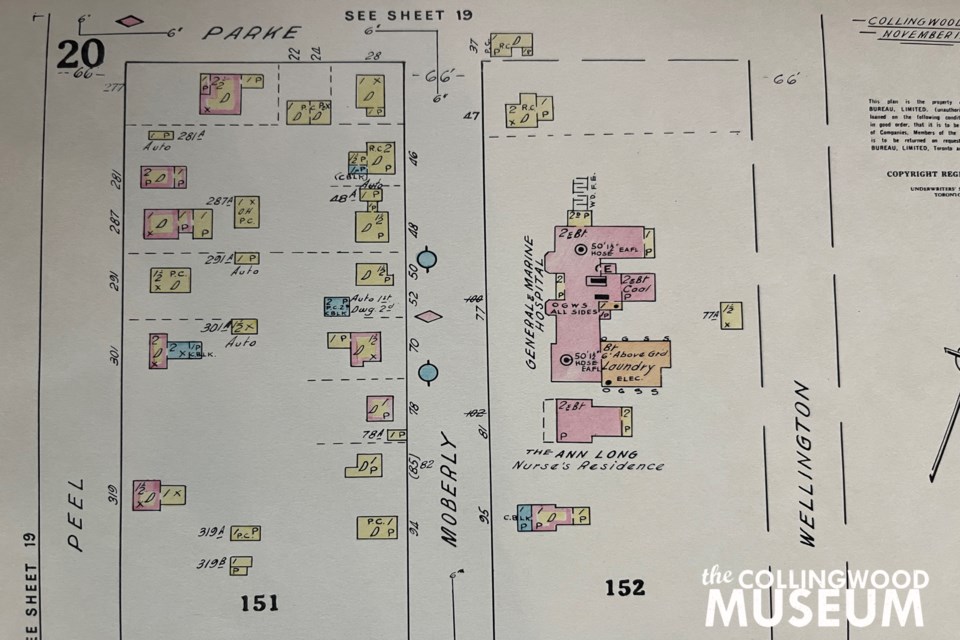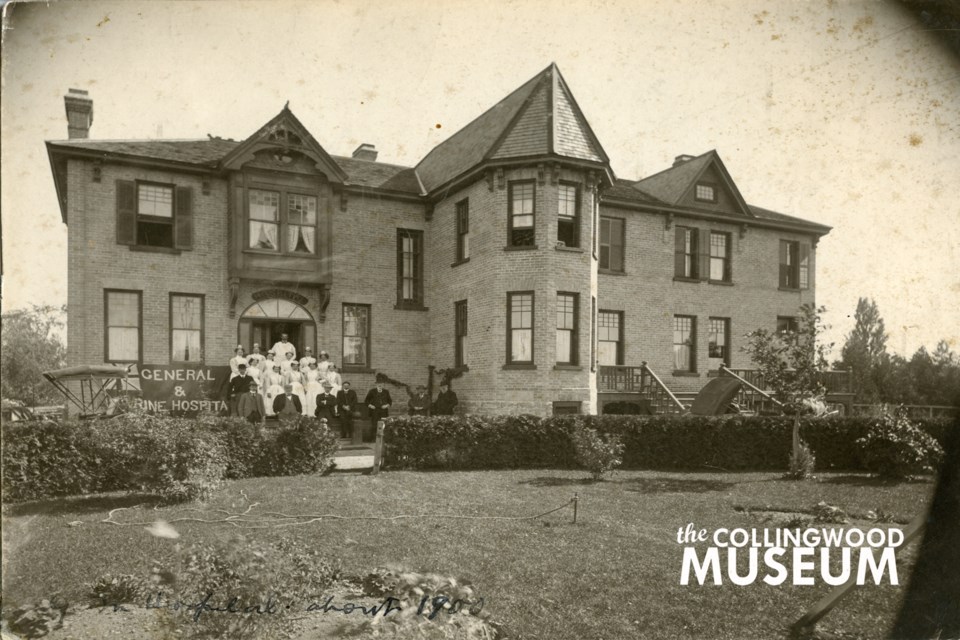This ongoing series showcases historic photos in the Collingwood Museum collection, with research and writing by Melissa Shaw, the museum supervisor.
No matter how much time has passed, identifiable features of certain historic buildings and institutions remain unchanged.
Perhaps surprisingly, Collingwood’s General and Marine Hospital is no exception. While the hospital’s physical appearance has changed greatly since its official opening in 1889, its name has remained the same.
Unlike many hospitals, Collingwood accepted and cared for sailors, hence the inclusion of “marine” in its name. More than 135 years later, the continued use of “marine” in “General and Marine” stands as a tribute to the community’s importance as a port of call on the Great Lakes.
In Collingwood’s early years, residents paid for treatments either at a doctor’s office or in their homes.
A document in the Collingwood Museum’s collection, entitled Medical Tariff for North York, South Simcoe and Adjacent Townships, records the financial charges for medical advice, consultation, surgeries, obstetrical services, and associated travel for home visits in 1866. This fascinating document was donated to the Huron Institute in 1923 by J. W. W. Stewart of Winnipeg and has been preserved in Collingwood for more than 100 years.
According to the 1866 document, a simple visit in the doctor’s office ranged from 50 cents to $1.50. Living outside of towns or villages came with an added cost for patients who relied on home visits. For travel of one mile or less during the day, an additional fee of $1.00 was charged, with an extra 50 cents for each additional mile. For night calls, these fees nearly doubled.

The most expensive procedures are categorized as surgical cases with “lithotomy, amputations of upper or lower extremities, removal of large tumours, operations for cataract, etc.” running between $15.00 and $50.00. Although Collingwood isn’t specifically identified, this document provides insight into the expense of medical care during this time in our local region.
Access to care and treatments would have been financially challenging for many. Added difficulties included the conditions of care for those recovering from ailments at home.
Eliza Lett, president of the Ladies Hospital Committee, gave voice to these concerns in a letter to editor of The Bulletin in 1887.
“There is seldom a month where there is not some urgent case of sickness, which especially with the very poor cannot be properly attended to in their own homes," she wrote. "Quietness is often impossible, and the food intended for the sick is, in many cases, shared by the whole household. In cases of accidents proper beds, surgical appliances, and good nursing are often what cannot be obtained in boarding houses, to which the sufferer is carried.”
These realities fuelled the cause to establish a hospital in Collingwood.
At the request of four local doctors (Drs. Stephen, Aylsworth, Aikma, and McKorracher), local women banded together to form the Ladies Hospital Committee and take up the momentous task of raising funds for a local hospital.
After a successful campaign, Collingwood’s new hospital was incorporated in 1887, and formerly opened to patients on October 24, 1889.
According to The Bulletin, a large gathering of town and country residents attended the hospital’s official opening with local and provincial dignitaries offering compliments to the Ladies Hospital Committee. The newspaper account notes that Rev. Dr. Campbell “did not forget to compliment the ladies, and particularly Mrs. Lett, on the success of their great work.”
It seems, however, the organizers may have neglected to invite a representative from the ladies committee to speak on behalf of their own efforts at the official opening.

The original hospital, and its subsequent additions, were located on the east side of Moberly Street on the same property as today’s hospital building. The beautiful, original Victorian hospital looked west towards Peel, just north of the Ann Long Nurse’s residence, between what was then known as Parke Street and Hume Street.
To date, Collingwood Museum staff have been unable to locate a photograph of the Ladies Hospital Committee, or any photograph of its president, Mrs. Eliza Lett. If you have a photograph of either, please contact Collingwood Museum staff today. Staff are eager to see if Mrs. Lett’s likeness can be found in the museum’s early photographs that document the beginnings of Collingwood’s General and Marine Hospital.




